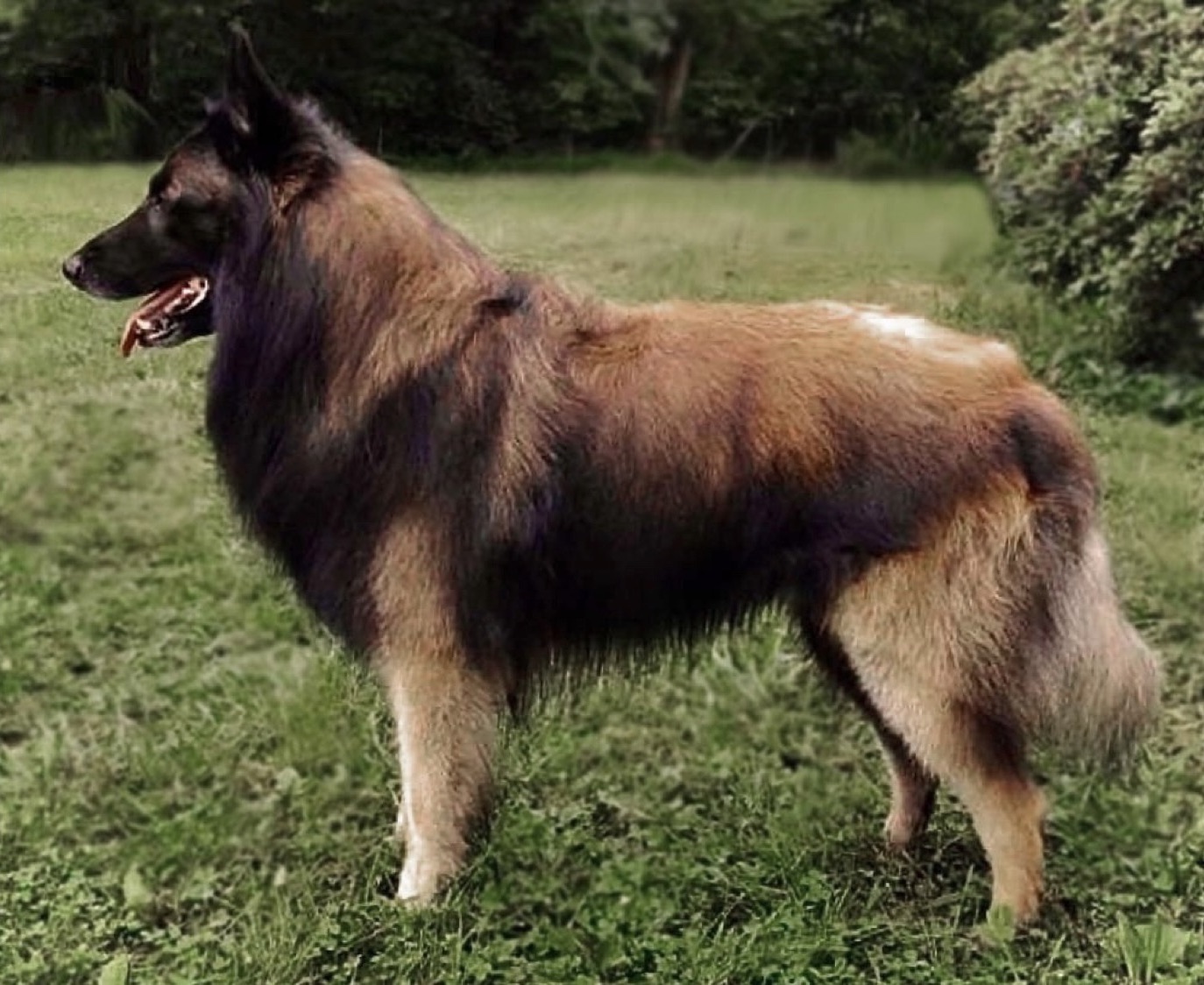



Welcome to the landing page for all of our F1 Fortune pup-dates! Please use the links below to jump through sections.
Once in a section, you can click the section title to return to this table of contents.
Enjoy!


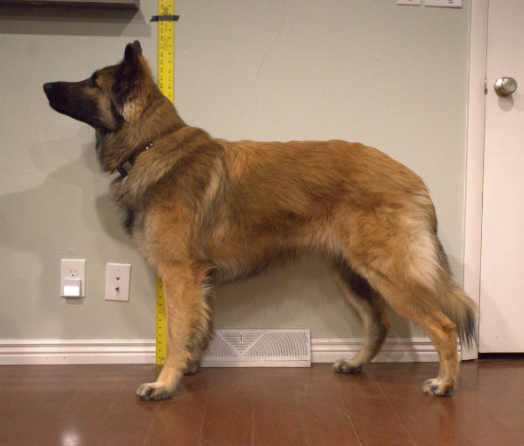 Rodan: AndreaNow at one year old, Rodan is in the throes of adolescent brain. The canine neurologists were not kidding when they say that the prefrontal cortex lags behind in development during the teenage stage. Rodan reacts to stimuli without thought, with 100% energy. Paired with his low frustration tolerance, it makes him prone to outbursts, big feelings, and sharp reactions. He is extremely alert and very sensitive to the environment around him, and is constantly on the watch for "the next thing". Rodan is highly visually stimulated, and will focus on anything moving. He lives for the chase, and would go after animals large or small, if allowed. We can still currently call him off the chase, provided he's not overstimulated, as we practice impulse control with the flirtpole. He absolutely adores his flirtpole and would play without end if he had any say. His temperamental counterbalance to his low frustration tolerance is his joy, confidence, and recovery. Rodan truly thinks life is a party and enjoys being the center of attention. He tackles physical challenges with relish, and is 'first through the door' in nearly every situation. If his sensitivity gets the better of him, he recovers quickly, and will rengage almost immediately. Often, if something startles him once and he investigates, he won't startle a second time. 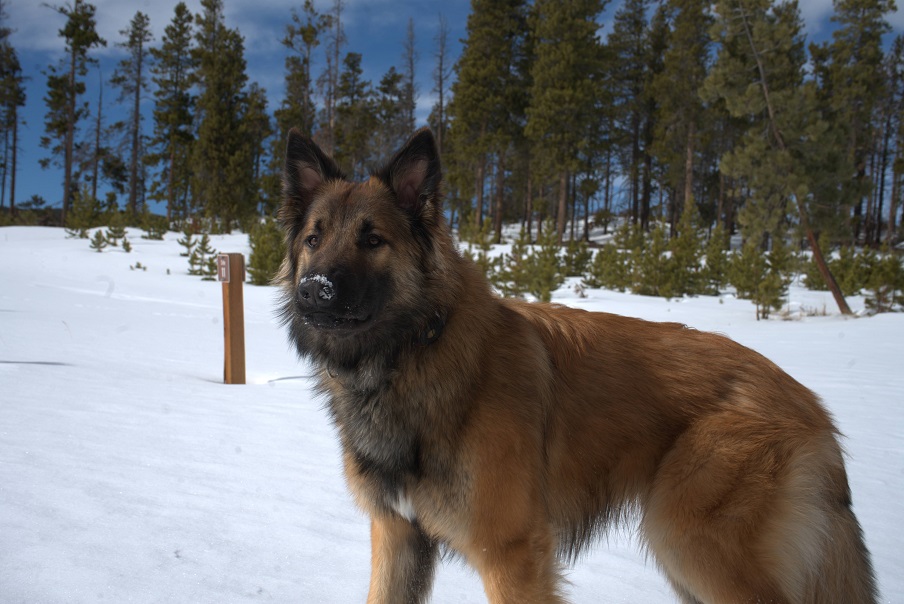
Rodan loves other dogs, but is initially reactive to them. His big feelings and excitement overwhelm him, and he is beside himself with frustration. If his frustration levels are kept low enough, he usually greets the other dog, and then moves away and prefers to play frisbee or ball. On the rare occasion when he wants to play with another dog, and the dog also wants to play, he is brainless and rambunctious, and will "talk" like his husky housemate. We have to monitor him closely though, as he is so in his own head, he will often not notice the other dog's cues to 'stop' or 'leave me alone'. We are the most important people in Rodan's eyes, he wants nothing more than to be around us, and be involved in what we're doing. It makes chores harder and take longer, but certainly more amusing. He will pout if we leave him out- so much so, we tease him that instead of FOMO, he has TOMO (terror of missing out). He is always in the same room as us, if not touching one of us. Though not a big snuggler, he will lay against our legs or on our feet. 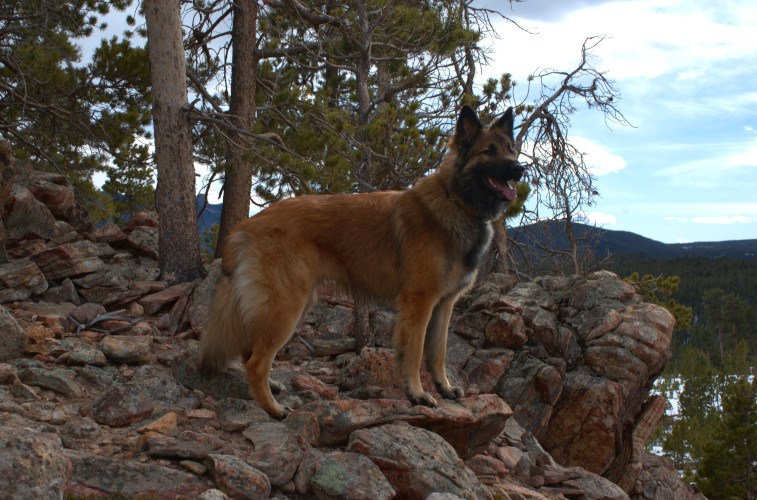
Rodan will greet new people, though he is more interested in what they smell like, than receiving their attention and affection. He will allow them to pet him, and he will continue to stand next to them for as long as they do so, but after he has given them the sniff-over, he has already gone back to scanning his surroundings. With people he knows, he is much more enthusiastic and will wriggle in circles and slam repeatedly against their legs in welcome. He adores children, and would attempt to greet them with the same intensity he greets adults. He is still our shark puppy, if only because he bumps (slams) into things to figure out what they are, and because he believes that if he stops moving, he would surely die. His tireless Tervuren energy means that Rodan absolutely loves our hikes, and is an excellent hiking companion. He will circle us almost without pause, nose to the ground, ear in our direction, and will bound back with such joy when recalled. When we sit on the trail for a snack or some water, he will grab a downed branch and begin to gnaw. If we remain stationary for too long, he will go back to circling us and start to whimper. He is constantly improving on his mat-training, though he finds it very hard to stay still when he hasn't been asked to. Because he lacks the focus and the computing power, our training sessions have been short and sweet. He learns new behaviors very quickly when he has good focus, and has been doing well with his cooperative care. We can check his teeth and ears, handle his limbs, and brush him all over. He seems to have gotten some paw sensitivity from his Belgian side, because while he still allows us to dremel, he would much prefer if his nails needed no attention at all. 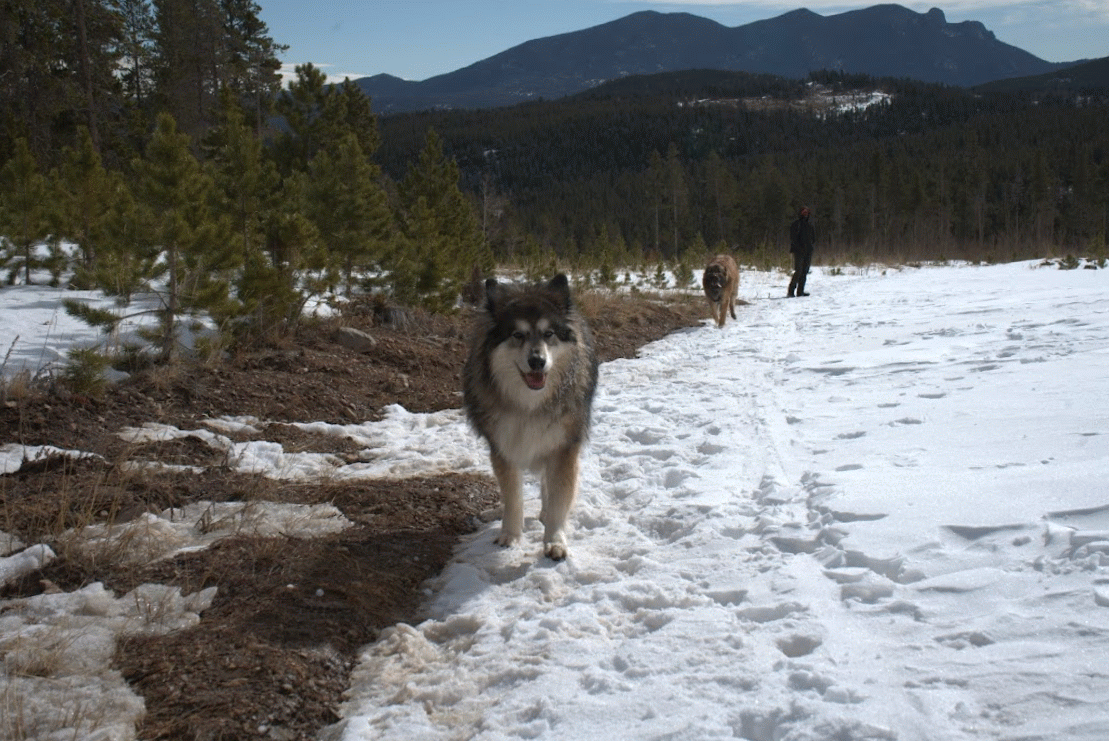
He still desperately fights sleep, it appears that when he catches himself dosing he will spring to his feet in order to grab a toy to solicit play. He's got a "recharge time" of about one hour, regardless of exercise duration or exertion. He would not rest if we did not force him to take a break. We have kept a close eye on this trait, as he gets overstimulated easily and could end up a superathlete with no emotional regulation if we're not careful. As he creeps closer and closer to adulthood, and closer and closer to his adult brain, we can really start conditioning for agility, obedience, disc, or even bite work. His handler focus started to pop in and out around the 10/11 month mark, and he has really started to blossom during our daily training sessions. He is pretty enthusiastic about his training, and delights in offering previously taught behaviors outside our sessions. While we love to see all three of his brain cells put to work, we eagerly look forward to pushing him harder as his patience, impulse control, emotional resilience, and higher reasoning capabilities develop. 
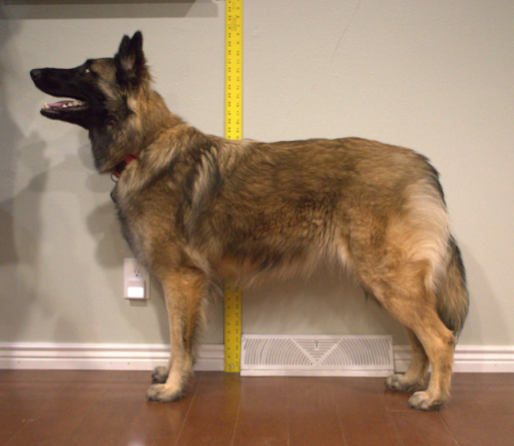 Lenore: UrsaOne year passed so quickly! Lenore has matured a lot and we’ve really gotten to see her personality develop. 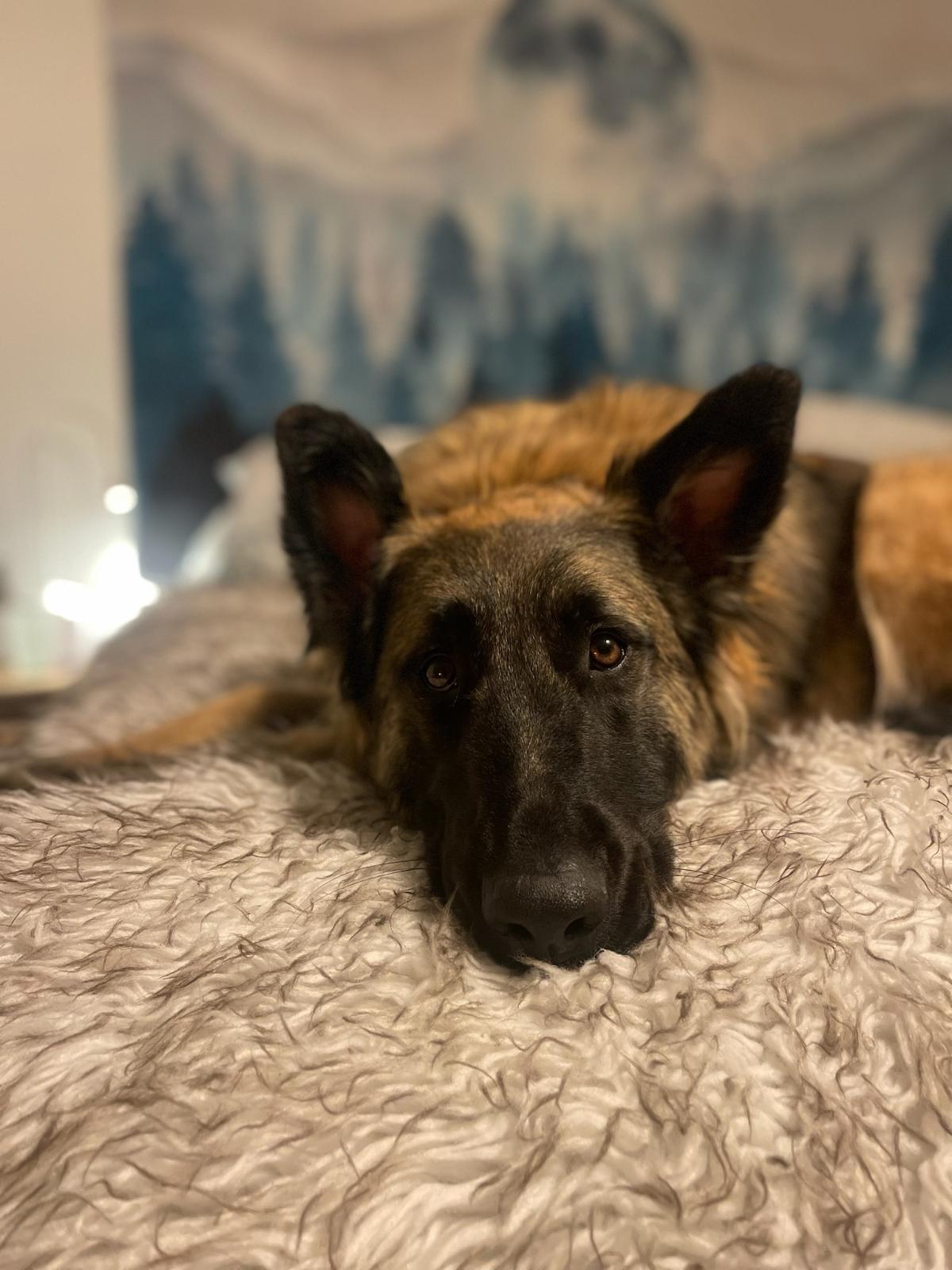
She’s an active dog who loves playing fetch, chasing the flirt pole, hiking, wrestling with other dogs, and nose work games. She really enjoys being outside - the colder the better! She will flop down in the snow and take a nap if given the chance, and we have to insist that she comes inside if the weather is too cold. Her puppy nipping and errant chewing have decreased dramatically in the last few months! She has never been particularly destructive but did have her moments, and definitely went through a very mouthy/nippy phase. We’re not sad to see that pass! She adores other dogs and is a frequent visitor to our favorite dog parks (Denver is lucky to have several 100+ acre open space dog parks.) When first greeting dogs, she is shy and appeasing, but once they make it clear that they want to play it’s game on, and she will chase, wrestle and tumble for as long as we let her. She does seem to be very nimble for her size and will adapt her play style and self-handicap for dogs who are smaller than her. 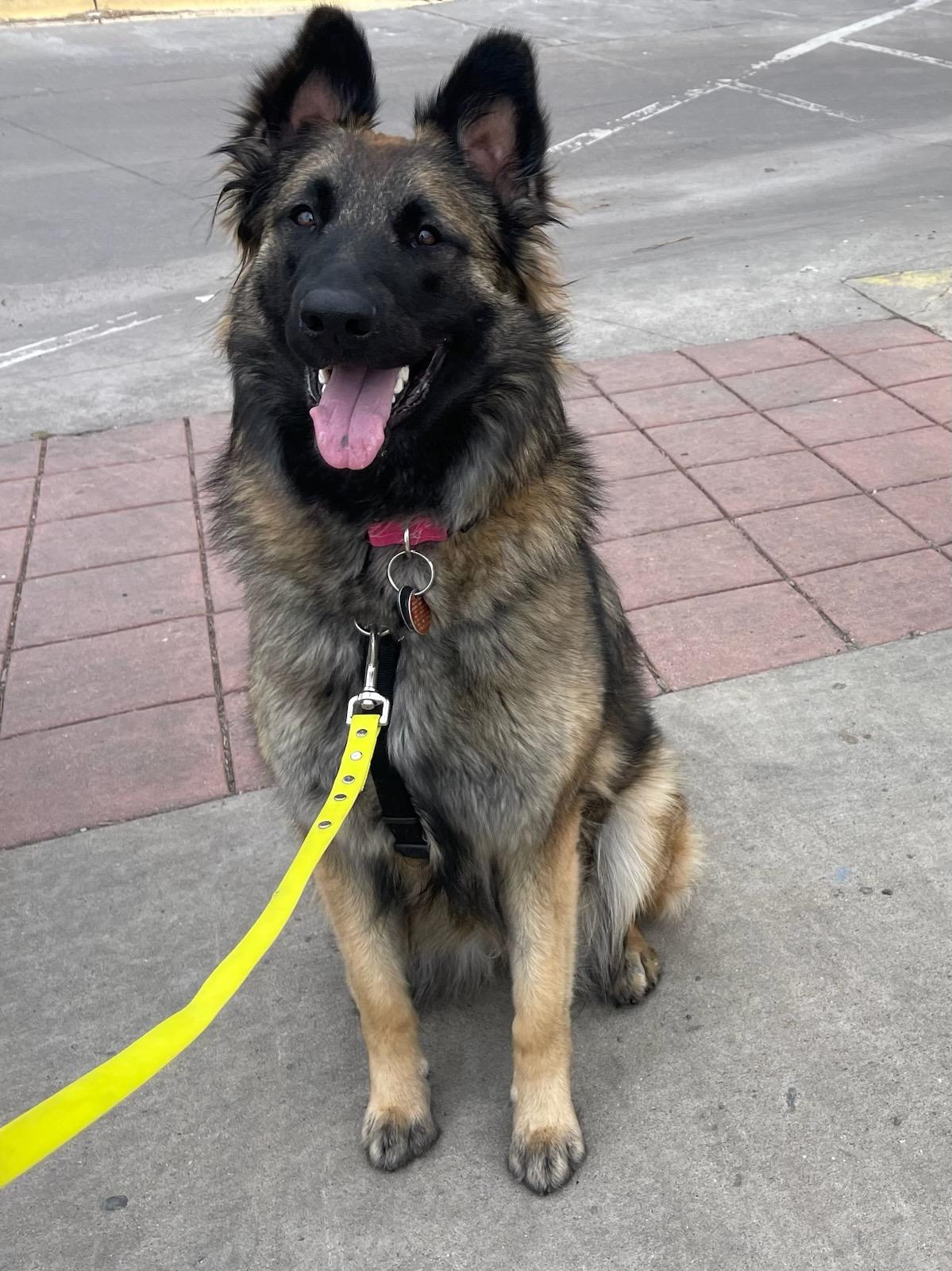
She is a little possessive of food and chew items with other dogs, showing some low-level guarding behavior (vocalizing, body blocking, rushing the item.) These behaviors are much more pronounced with our older dog, Zip; I believe this is because Zip is deaf and has never been able to hear Lenore’s vocal communications. The behavior is generally mild and hasn’t escalated, and we’ve never seen any guarding with people. Lenore loves her people - she is incredibly bonded to myself, my husband and our 8 year old son; she also loves our friends and family who visit regularly and will greet them with exuberance. She is a bit shy with strangers - if met outside the home, she is generally aloof, and if they enter the home, she will run up and bark vigorously (it’s a BIG bark!) As we prefer her to greet people calmly and in a friendly manner, I’ve implemented a more structured greeting protocol that helps prevent her from being reactive. It’s been very successful and she generally warms up to guests within a minute or two (treats help!) She is reactive (barking and fence running) towards people and dogs who walk past our house, but rarely reactive to anything on walks or out in the world. She enjoys sitting in the yard and watching the birds. 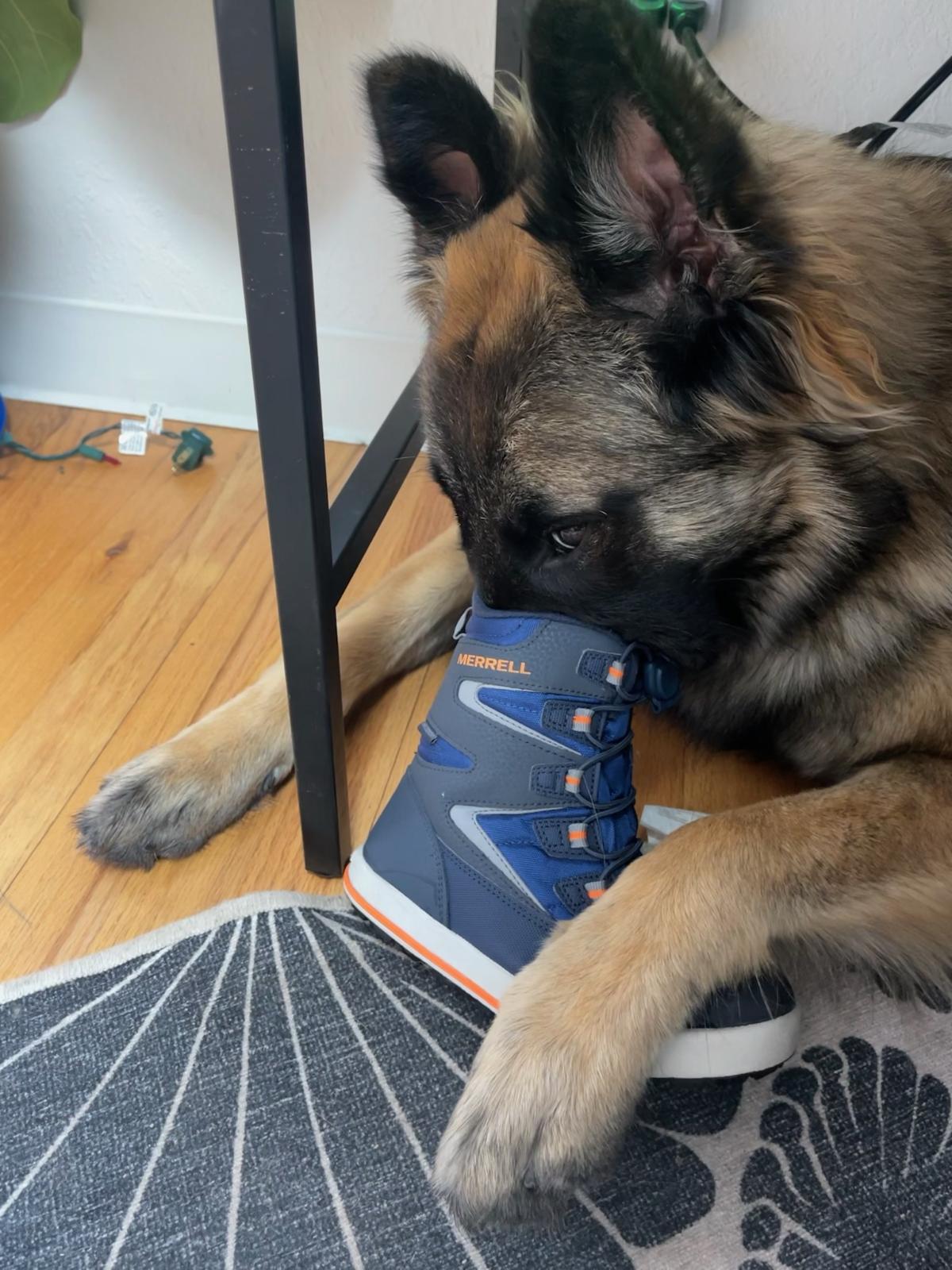
She seems to be a very thoughtful pup and is generally very easy to guide with voice cues. She’s extremely motivated by food and play, and is easy to handle around distractions. She is still sensitive to sudden changes in her environment, but recovers quickly - this goes for movement, noise, and surfaces. However, she is quick to tackle known obstacles and also quick to get comfortable with some gentle encouragement. She trains eagerly and picks up on things fairly quickly, although can get antsy when working on duration behaviors or when being asked to sit still for too long. Lenore definitely does not know how big she is, and still thinks she’s a tiny lap dog! She likes to snuggle by laying on top of us in bed or laying across my lap when I’m at my desk. Everyone who knows her thinks she has a funny sense of humor and a sweet, silly personality. She is definitely a big goofball and we can’t imagine life without her antics. I hope to begin training her for SAR work this spring or summer; even if she doesn’t cut it as a SAR dog we are so glad to have her in our lives! 
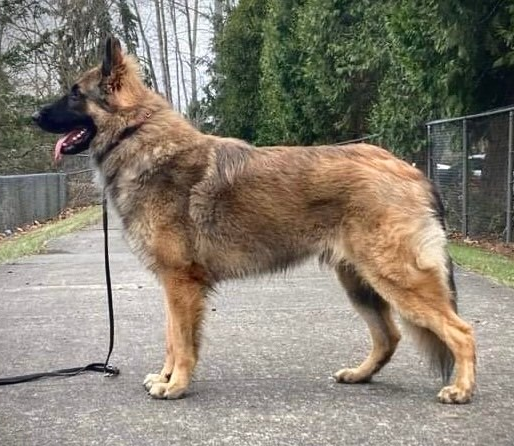 Flynt: Kathryn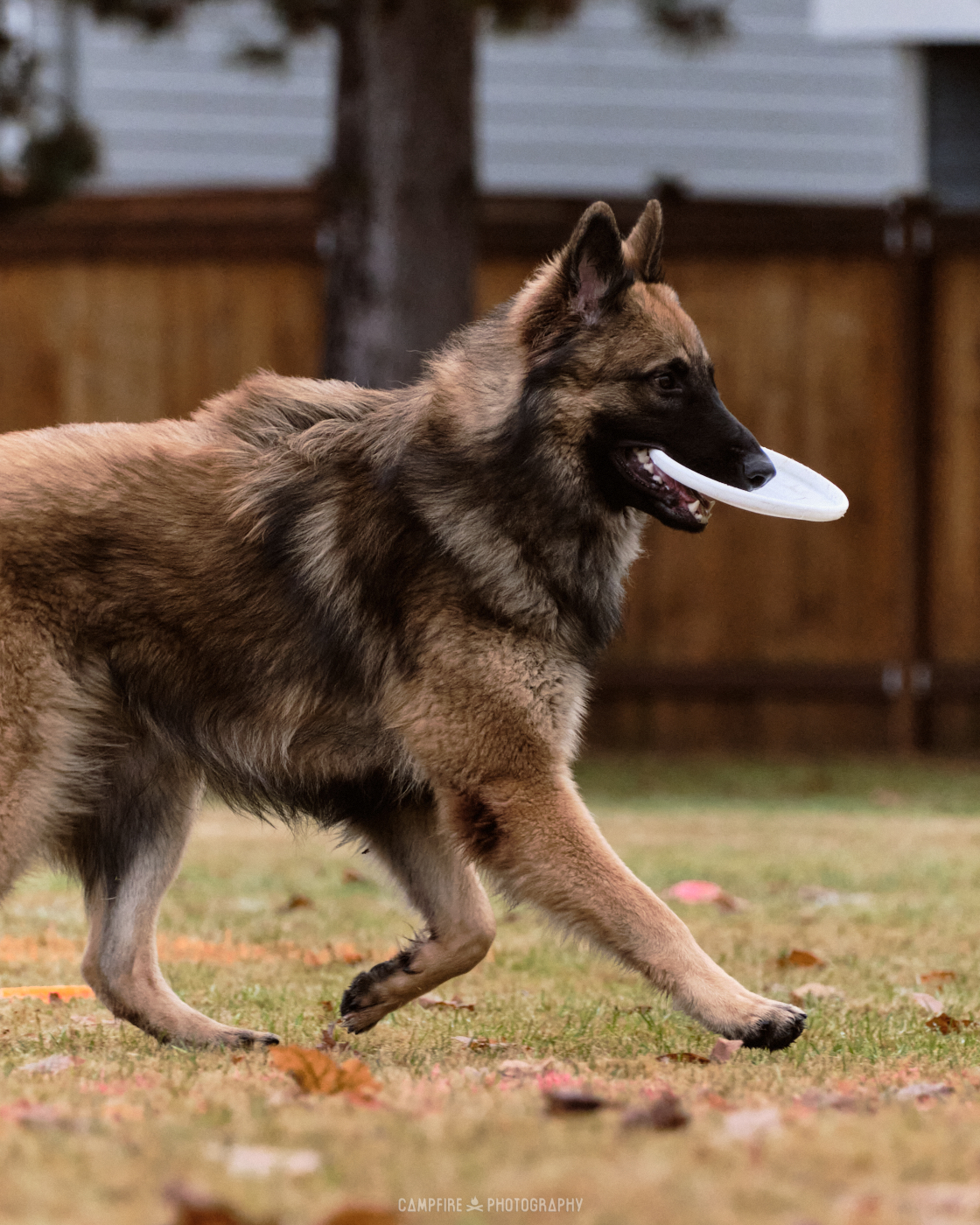
Flynt is a goofy, sweet, and rambunctious boy wrapped into a loveable package. He is up for anything, as long as he gets to participate and be a part of the fun. Recently, we've jumped head first into more sport endeavors such as UpDog Disc and Sprint Racing as part of AOK9. Each sport we've tried he gives his all and has fun the entire time doing it. In the next year or so I'm aiming to get him into weight pull, agility, dock diving, rally, and nosework; along with continuing disc and racing. Flynt has the go-go-go of the Tervuren half with drives to match. He is medium-high energy with medium-high food drive, medium toy drive, high prey drive, and high pack drive. If you aren't in his "pack", he doesn't care about you. He is friendly and outgoing towards his friends (human or dog), and neutral/aloof to anyone else. He did go through a small "stranger danger" phase where he would spook if someone surprised him, however that seems to have been a fear period and pretty much resolved itself back to being aloof. 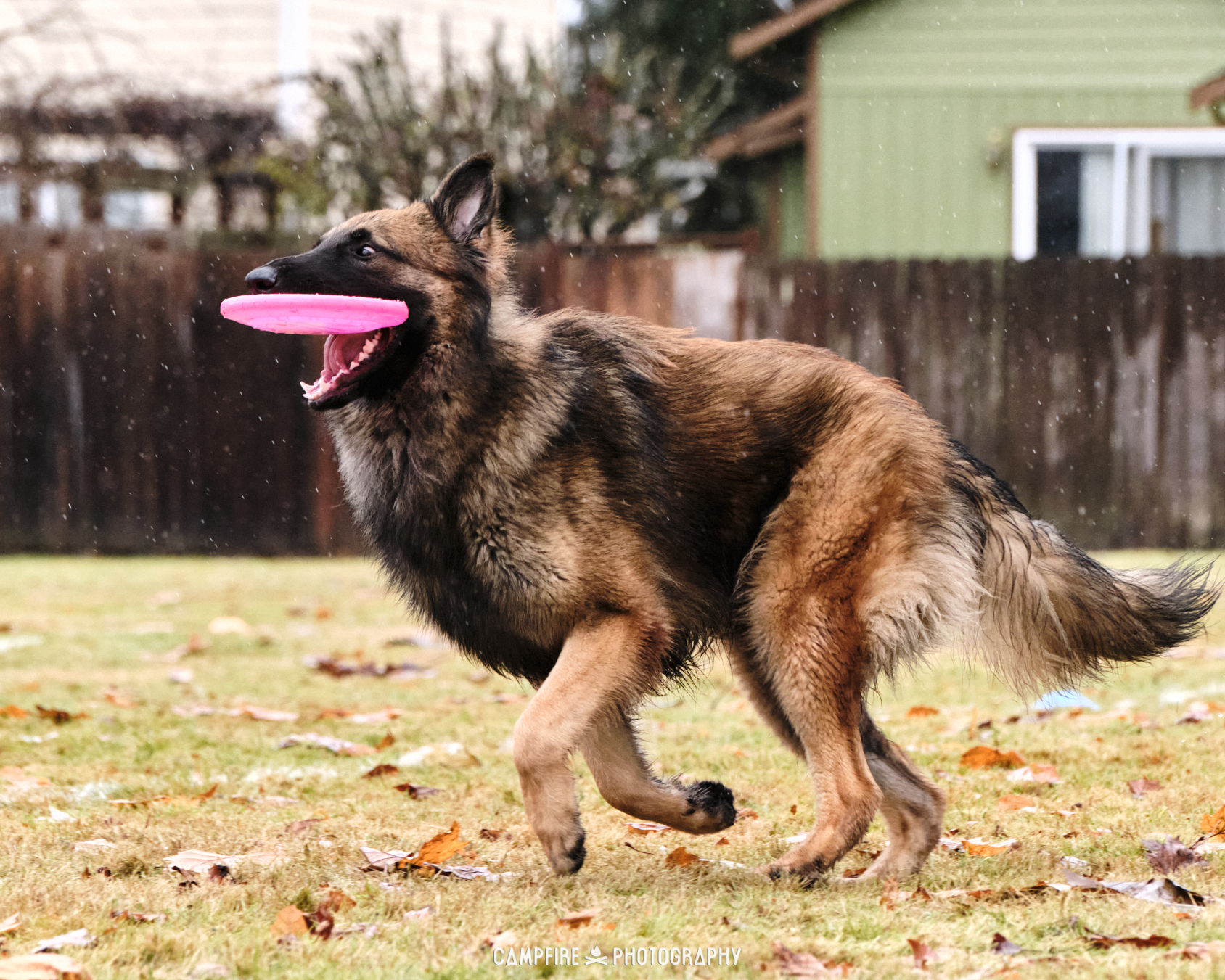
Despite being very "on" when you are doing something with him, he has a nice off switch and can relax around the house with you. He is very cuddly and loves to be touching his people, almost too much so since he has no clue how big he is and in turn tends to smother more than cuddle. For his age, Flynt is doing incredible with obedience (reliable heel, sit, down, implied stays, recall, etc) and picks up new concepts incredibly quick even though he doesn't have much common sense, which I'm hoping will develop with more maturity. Overall Flynt has been an awesome addition to the family and my pack of pups, along with a wonderful learning experience as I dive deeper into the sports world! 
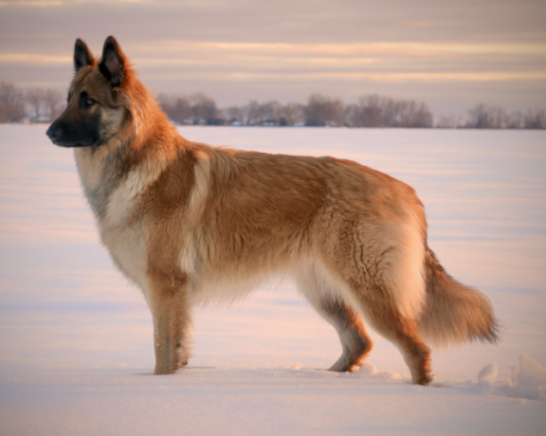 Róka: KristinaAfter bumbling blindly through her first year barrelling unexpectedly into not only the typical Shiloh fear phases around 12 weeks, 5 months, and 8 months. She ALSO had to navigate the additional Belgian Tervuren fears phases completely separately! Reaching those at 7.5 weeks, 6 months and 10 months. It took a considerable amount of dedication to carefully navigate these back to back developmental milestones. But so far we have managed to come out at the one year mark with no lasting ill effects from these dual fear phases. Róka has slowly become very welcoming of guests and strangers. Though she might pop off a couple quick half hearted barks to announce a stranger's appearance into the home or property. (But I love myself a good “doggy door bell” so this is not a habit I have worked to change). She is still struggling with learning not to alert barking when she sees an unfamiliar dog well out on walks, but joining canine agility classes recently has been helping lots to lessen this quirk in her. Hoping this will continue to improve her overall “grit” a little more. Upon doggy introductions with new dogs, in my opinion she can be a touch shy at first. But warms up within a few brief seconds, often bounding straight into inviting play bows once she has decided the dog is safe/friendly. She also has been showing some signs of prey drive (something that is not uncommon in Tervurens, but less so in Shilohs.) Her daily routine on walks almost always includes her pouncing head first like a fox into deep field snow in search of mice. This prey drive also extends to squirrel and bird chasing. Behaviors which her full shiloh mother does not share. Interestingly enough this prey drive doesn’t extend to domestic animals like Chickens. She seems to naturally behave differently around farm animals then she does the wildlife. Róka also inherited her mothers herding drive (likely some from her fathers as well). And I seriously wish I had had the chance to work her on sheep or other livestock when she was a bit younger. I feel like she has an incredible aptitude for doing herding work on a small homestead. Overall she is an extremely happy dog, and does everything with enthusiasm! She enjoys when her people speak to her, and will respond with anything from tuned in ears, and an adorable tail wags. To even offering behaviors like sit or paw, as she openly engages, listening genuinely enjoying the conversation directed at her. Without a doubt she is a very intelligent dog, and it can be a challenge to stay one step ahead of her at times. She is also a super cuddler, loves physical affection. Often situating herself in people's laps, yep all 80+ pounds of her! But good luck trying to convince her she’s not a lap dog. She will do everything she can to convince you otherwise! When not actively engaging with her people Róka enjoys people watching from the back deck as the neighbors go about their business (shoveling driveways or bombing around on snowmobiles and ATVs.) She loves the cold crisp weather, and has grown a thick well adjusted coat for the Canadian climate. Looking forward to seeing where this girl is at by her 2nd birthday, she is showing a lot of promise despite the substantial hurdles of navigating double fear phases. 
|
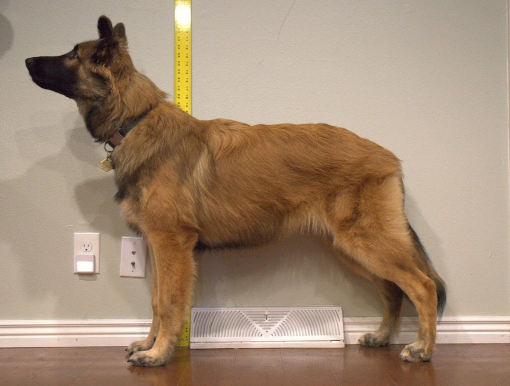 Rodan: AndreaRodan is a very happy, very active boy. He absolutely loves to be with his humans, showing affection with kisses and teeth. He must, must, must 'help' with everything mom/dad happen to be doing, including sit-requesting inspections of any object being held out of his reach. He is currently a momma's boy, and leaps at the chance to attempt to curl all 70lbs himself in her lap. Otherwise, you can find him pressed against mom/dad's legs, or laying on their feet. 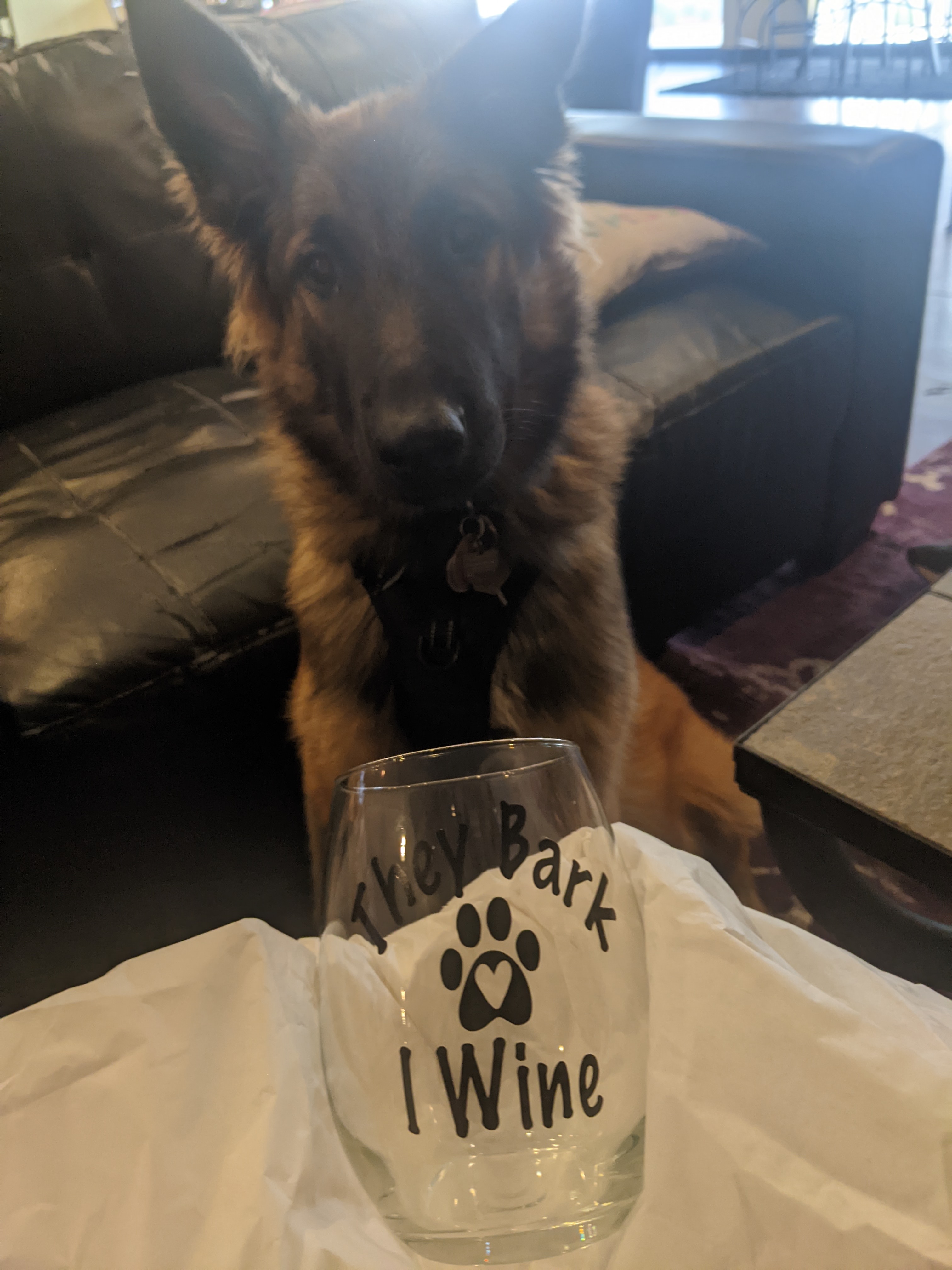
He also loves his big sister, and they eagerly chase and wrestle. He is interested in, and friendly with, other dogs, and happily greets them when allowed. Rodan is very alert to his surroundings, and will leap to attention and bark if another dog 'sneaks up' on him. While he will greet strangers for pets and offer a few wags, he greets more familiar humans with more gusto, but returns to mom/dad quickly. As a very young puppy, he only spooked at humans less than a handful of times- beard, sunglasses/hat, and a shuffling gait being the triggers. He was never forced into interaction, and the second time he met those individuals, he greeted them without trepidation. Those triggers have appear to have faded, and his confidence grown, as he has not any problems since. He is not often spooked by new objects, or strange noises, and will more often than not ignore them, including- construction, traffic, loud music, thunder, rain, wind, squeaky shopping carts, chairs sliding across the floor, fireworks, car backfires, slamming doors, yelling/cheering partygoers, and more. He will traverse any obstacle or object we present, confidence increasing with every step and every repetition- boulders/rocks, chairs, ramps, grates, benches, both dog and human playground equipment, wobble boards, tunnels, skateboards, tarps, ballpits, plastic tubs, and wading pools. 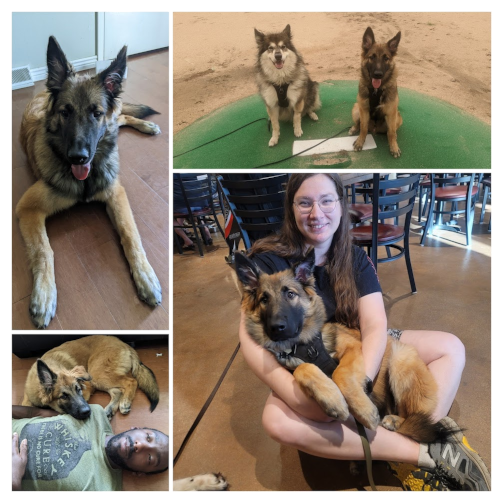
Rodan loves his flirt pole, and loves to chase balls, frisbees, tugs, and even flies. He can be called off most things currently, but his teenage brain is coming in, so we anticipate having to rebuild this skill. He is always trying to observe and act, and tries to sleep as little as possible, even from early puppyhood. We have to follow a sleep protocol in order to get him to rest and avoid the crankies. He has decent stamina and recovers from exercise quickly, right back to his original energy level, even over multiple sessions in a day. He feels that he must be moving constantly, so will circle his handler endlessly, at the length that his leash allows. He will often cry if his handler is stationary for too long, or if he is more than five feet away from the core members of his household, if we are all walking together. He has learned to settle nicely in indoor/patio environments, but is still learning to moderate in the outdoors. Rodan is clever, and can pick up things quickly, if he can get out of his own way. He has a very low frustration tolerance, and gives up quickly when learning new tasks, or will cry to try and get what he wants- often access to a person or place. He is very easily excited, and very easily moved to meltdown. He has a low pain tolerance and will cry over inconveniences long before they would be considered in the realm of 'pain'. We are anticipating a lot of changes as Rodan continues to develop mentally and behaviorally, but we are so excited to see the dog that comes after the teenager. 
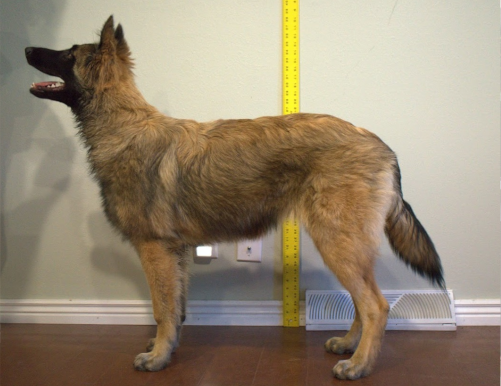 Lenore: UrsaLenore fit into our family from the first day like she’d always been here. She is the sweetest puppy and very chill at home, although she does get the zoomies at least once a day. She loves going on walks, chasing a ball, playing tug, chewing, and chasing the flirt pole. She also LOVES meeting and playing with other dogs. When she gets really excited, she snaps her jaws like a terv. Our senior border collie, Zip, is less than thrilled about having a puppy and set firm boundaries from day one which Lenore has been very respectful of. 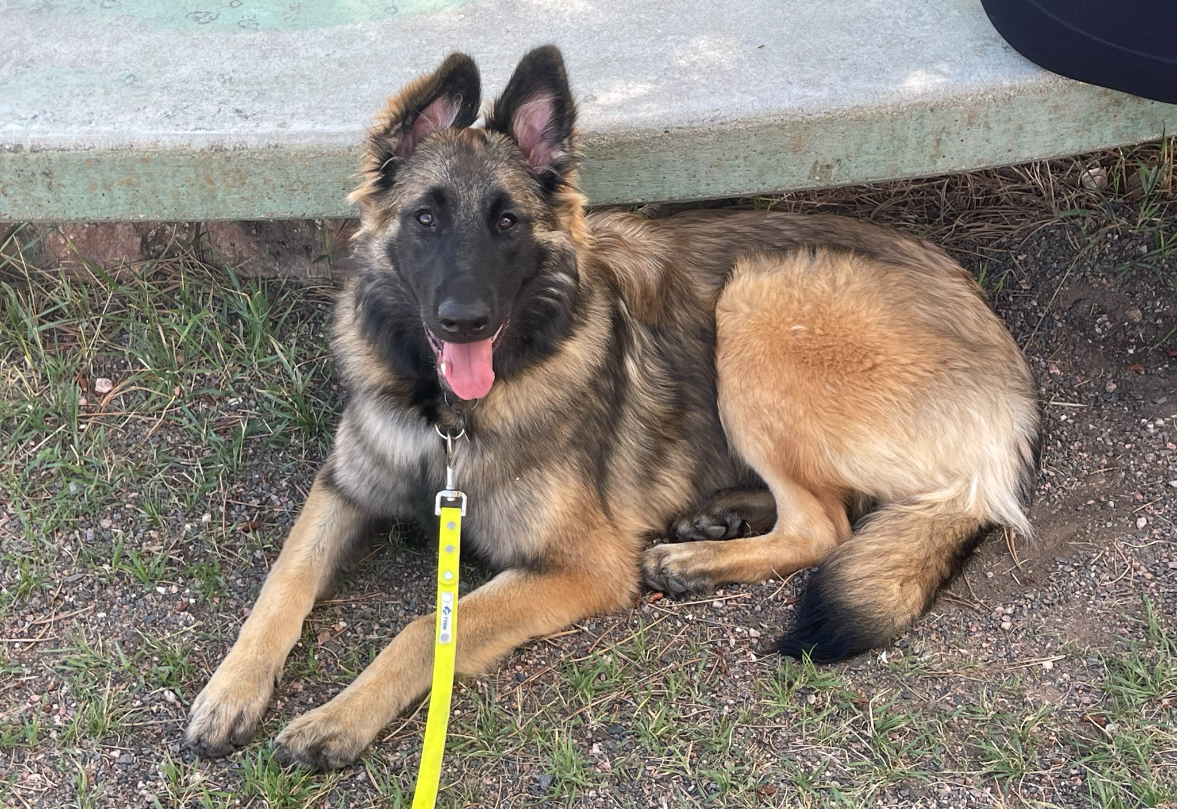
Lenore is sensitive, but resilient. She can be shy with new people who come to the house but she warms up very quickly and once she does, she’s extremely affectionate and affiliative. Although assessed as noise sensitive as an 8 week old puppy, I have not really observed noise sensitivity specifically but she is sometimes startled by sudden environmental changes. She generally recovers immediately. Both of these sensitivities have improved significantly over time with consistent and gentle training. She is great with handling and loves brushing, allows me to grind her nails while laying calmly, and is learning some cooperative care techniques to ensure she can continue to calmly participate in handling. Lenore loves our 7 year old son and has been extremely gentle with him and his friends. She’s very snuggly and affectionate with our family in general and wants nothing more than to be with us. She enjoys cuddling in bed at night and in the mornings. 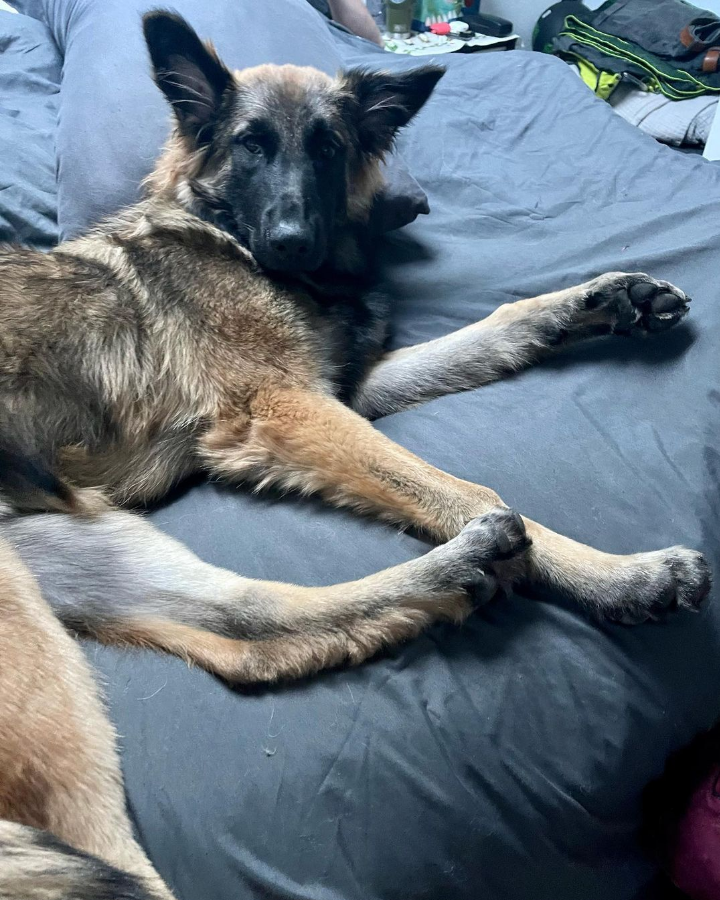
Physically, she is up for any challenge. She learned how to climb the ladder to our rooftop tent (with help) the second time she went camping with us - good thing, since she is too big to carry up there anymore! On hikes, she is unstoppable and loves scaling rocks and climbing obstacles. She’s also quick to splash in any body of water we encounter. I have started her on some basic scent work in the hopes that she can participate in SAR work with me in the future and I think she’s showing some good aptitude for searching. She is also beginning to help me with some of my easier training clients, for now only assisting me with safe, social dogs who need a dog as a distraction. She has rocked this job and is very attentive to me during training and great at ignoring other dogs and people. Overall, she has been a wonderful companion for us and we already can’t imagine life without her. She’s starting to become more active and we can see the beginning of a “teenager” phase but we know she’s going to continue to grow into a phenomenal dog! 
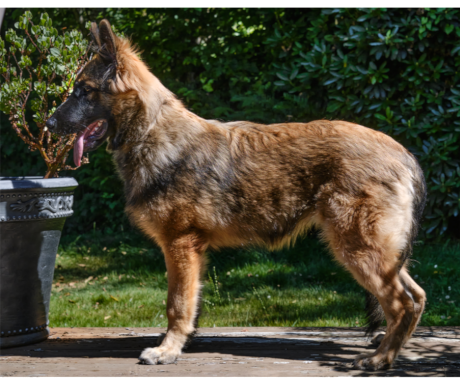 Flynt: KathrynFlynt is a goofy puppy who doesn’t know his size, lovingly nicknamed Wrecking Ball. He’s always happy and ready to go do anything you do. Flynt is a medium-high energy dog with medium-high food and toy drives. He is generally a very stable dog temperament wise. He’s confident in his surroundings including floor textures, sounds, sudden changes, and new sights. The main challenge we’ve come across was some dog reactivity beginning at approximately 4 months old, but was fairly easily resolved with training and further exposure. He LOVES “his” people and is aloof to new people unless they engage with him first, then he will visit with them for a short time before refocusing on his humans. So far he’s been an incredible dog, a learning experience, and a fun companion! 
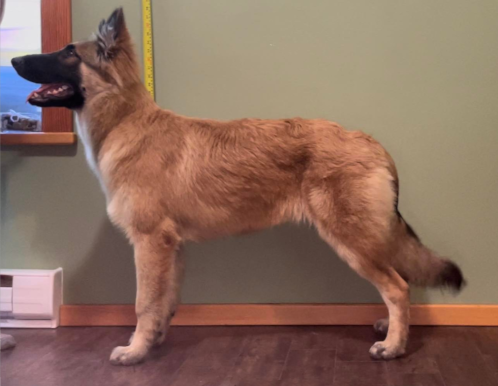 Róka: KristinaRóka has such a happy yet purposeful demeanor, joyfully bouncing around at any opportunity for fun, but always thinking every action through before perfectly executing it. Having an upper-medium energy and drive level overall, she is always ready for more. She prefers my human company over that of her mother’s canine companionship. She has a fantastic recall, while also being every bit as intelligent as her pure Shiloh mother when it comes to problem solving. Róka is incredibly attentive to her environment. Though being naturally aloof she is often wary of strangers at the first sight of them, and has previously, during various fear fazes, cycled through some bouts of vocal reactivity. She would naturally prefer to not engage with most strange people or dogs, though as an exception she often gravitates towards children, and enjoys playing with them. Upon formal introduction with adults she is quick to make friends, and once deemed a “friend” they are never forgotten. She has a strong pack drive. She is incredibly agile for her age, and has displayed amazing athletic coordination and balance. Róka enjoys going on adventures in new places, and travels very well on long road/ferry trips. She has been a very easy dog to integrate into my lifestyle, with minimal adjustments on my part. Róka also interestingly enough seeks comfort in the form of physical touch. She is a very sweet and cuddly creature, often laying her head on my shoulder while I drive, or wiggling herself right onto my lap when it’s time to relax and enjoy a little TV. Such a natural cuddle bug! She would likely be a natural for something like Compression therapy in the psychiatric Service dog field. All around she is a very sweet adolescent puppy, with a zest for life and a very polite demeanour, paired with great canine body language skills (expressive ears, fantastic tail control, inviting play bows, etc). 
|
|
We include for you here the overview of results from the original litter evaluation of the Fortune F1 pups. We hope this gives you an example of the sort of thorough evaluations we are doing on all of these litters, to get an idea of what we are gaining from our outcrosses. (Note: ISSA Litter Evaluation Reports (LERs) are performed on 100% of ISSA litters, not just outcross litters!) 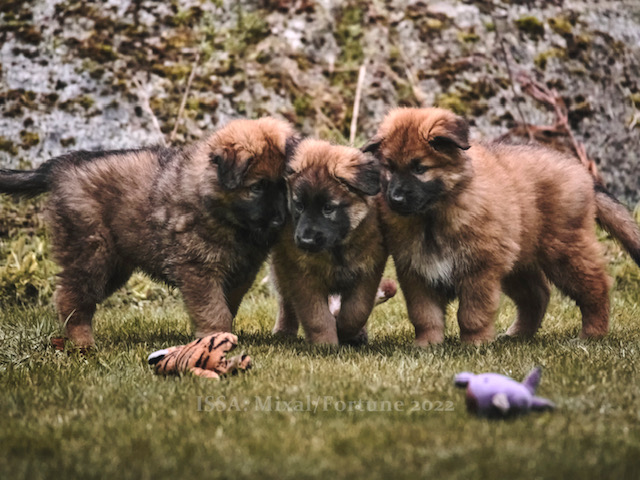
Welcome to our overview of the Mixal/Fortune litter! I performed the litter evaluation on these pups on April 2nd. It was very interesting and I was happy with what we’ve potentially gained from this litter! We saw some things we expected and saw others that were surprises. We’d like to share our results with you. Since the following overview is long, here is the TLDR version:
OVERALL TEMPERAMENT AND SOCIABILITYOne of the first things I’d like to talk about is that I believe our expectations regarding temperament with the Tervuren were somewhat flawed. We believed that, because of what we see in working line Belgians, we were likely to see high energy, high drive, and harder temperaments from this litter. One of the puppy people on this litter is a long-time Tervuren owner, and after the LER she corrected our mindset on this. She told us that show-line Tervurens, as Fortune is, are quite different from the working line. They are more sensitive dogs, with not as much energy and drive. They have an immensely strong bond with their owners, not caring much for strangers (as with many herding breeds). We saw all of these things in the Mixal/Fortune pups. To our surprise, all temperaments were on the softer side, with two medium-soft and two lower medium pups. All pups went 7 to 10 on submission and had moderate pain tolerance. The temperaments were very pack-driven, with the pups doggedly seeking to get back to the breeder and having zero interest in the tester. When the breeder was brought in to stand in the testing area, the pups were happy to work with the tester and the breeder. Recovery was very interesting. Whenever something happened that was stressful or that a pup was unsure of, the pup recovered quickly and went immediately to the breeder. These are dogs who will look to their owner for direction and they will be laser-focused on their owners. Only one pup warmed to the tester during the testing period, the others were very much one-family dogs. Though these pups can undoubtedly be encouraged to be friendly with strangers and taught a Shiloh version of “outgoing temperament,” it does need to be taught to them. They are naturally more aloof to strangers. One pup was more sociable with more of a Shiloh temperament, but he still had tight focus on his breeder. Aloof is an acceptable temperament with Shilohs and none of the pups were shy or reactive. Mixal, the dam, is outgoing and friendly, so we expect that when these pups are bred back to Shilohs we will see more outgoing temperaments emerge depending on the mate. As mentioned above, all of these pups were medium-soft to lower medium. One pup was quite soft. We did not see bold confidence or independence. When first introduced to the strange tester in the strange area, the reaction of all pups was instinctually to follow the tester (strong human focus) but when they realized the human was not their breeder and they didn’t know where they were, they simply trotted away seeking to find their breeder, litter mates, or to return to the puppy area (which was quite far away!). When the breeder was re-introduced, they would remain in the testing area and she obviously became their “check in” point. Because the pups simply would not stay in the testing area at first, we established a routine where we did the first five tests and attempted the retrieve test without the breeder present, but then brought in the breeder to continue the retrieve and tug drive tests. Otherwise, we wouldn’t have been able to get a good read on the pups. I felt that it was necessary, in the case of crossing to an outside breed, to modify our testing in order to ensure a good read on the pups’ temperaments. 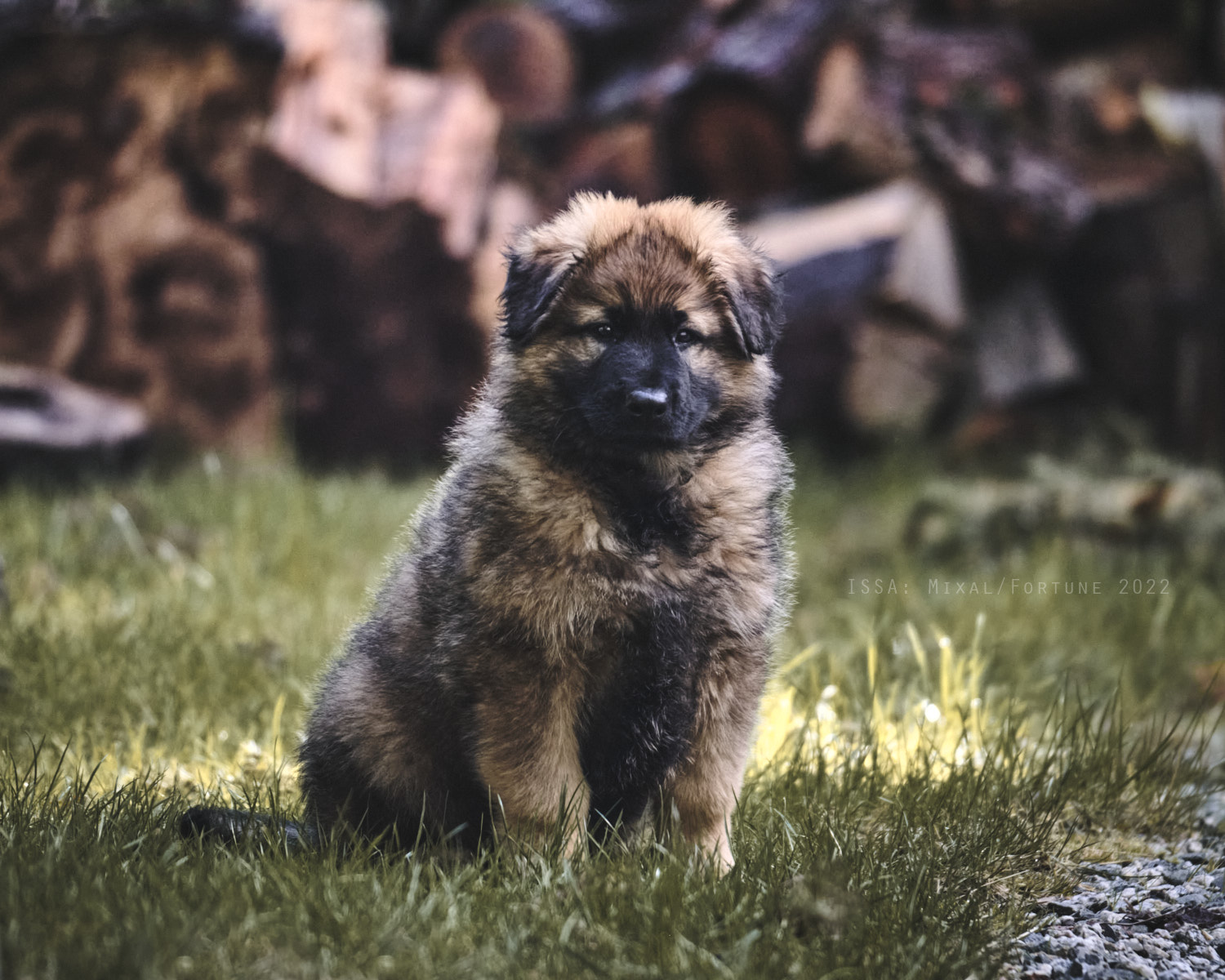
ENERGY AND DRIVEWith energy levels, we got a mixture in this litter. One puppy was very much on the Tervuren side. She was a much more physical pup with more energy than the others. Another pup was more low energy than we expected, much more on the Shiloh side, more laid-back. The others were in the middle, with moderate energy. Drives varied among the pups. Two drives that were high in all pups were owner focus and willingness to please. These pups had INTENSE pack drive, with very single-minded focus on the breeder/owner! We also saw a great willingness to please out of this litter across the board. These dogs will want to connect with and to do things with their owners, and they should respond well to shaping behavior and training in a variety of doggie endeavors! We got some prey and chase drive in these pups, but it was in a range we see commonly in Shilohs. One pup seemed to have more prey and chase drive, while another pup was actually low-drive in these areas and preferred to interact directly with the owner/breeder instead of playing with the ball or tug. The other pups were attracted to movement and enjoyed chasing the ball and tug. One pup retrieved the ball multiple times for the tester! Three out of four pups enjoyed the tug and would play tug with the tester. One pup wasn’t interested in tugging at all. NOISE AND STARTLE RESPONSEThree out of four pups were solid with the noise and startle tests. One was super-solid, did not even react to the balloon or can. Two looked around but then went back to what they were doing. One pup displayed a slight noise sensitivity. When the noise happened, the pup jumped and moved sideways, but recovered quickly, then went immediately to the breeder to “check in”. On the rattle can test this particular pup was then encouraged to investigate the can a second time and did so, to the point of putting a paw on it. MAZE AND PROBLEM SOLVINGAll of the pups did the maze in less than ten seconds. Three pups tried to go over one of the center boards, then seemed to use their eyes and the position of the breeder to “think their way out”. One pup simply trotted through with no fuss in only six seconds. None of the pups were anxious in the maze and none expected to be rescued. All used their brains and eyes to find their way. There was no ground scenting. These pups are visual dogs and they are thinkers. Even those who had an initial physical response of trying to go over a board rethought quickly and then executed the maze. One pup had so much fun doing the maze they tried to do it more than once! STRUCTURE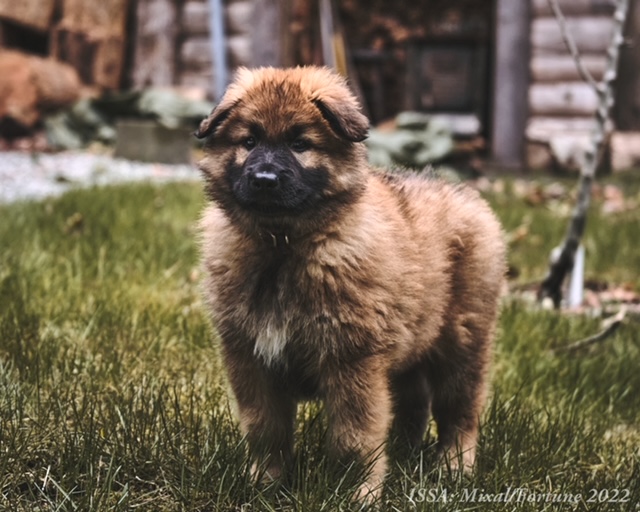
In general, the structure here was a good mix of the sire and dam and I feel it gives us a good place to build from if these pups pass health testing and mature well. Head (shape, stop): In general puppies had appropriate/good head type for their sex. One pup had a very nice broad skull. One was slightly narrow. The others were adequate per Shilohs. Stops were decent but a bit more would have been nice, except for one pup who had a pretty good stop. Eyes (shape, color): All pups had dark eye color. Three out of four had slightly round eyes and one had round eyes. Muzzle (color, shape): All pups had solid black muzzles. Width was average except for one pup with a nice wide/blocky muzzle. All muzzles were slightly shorter than the skull, which (if they remain so) should help with some of the longer/snipy muzzles we see in the breed. Underjaw: Three pups had decent underjaw (similar to their dam Mixal). One pup had truly excellent thick underjaw with a squared-off muzzle, exactly what we had hoped to see from this litter. Ears (size and shape): All ears had good pointed tips. All ears were triangular. However, all ears were also taller than wide. Ear sizes were medium to medium-small. Neck: Two pups had decent neck length per Shiloh type, and two had shorter necks. Chest and breastbone: To my surprise we had no shallow forechests; all pups had some breastbone protrusion. Two could have used more, one was average, and one was better than average. All pups could fit four fingers as far as chest width. Breastbone placement was slightly high in two and neither high nor low in the other two. Shoulder layback and angulation: Two pups had upright shoulders. Two had some layback but could have used more. All angles were more on the open side, though not as bad as expected. Front stance: One pup was east-west; the rest had good front stance. Feet and pasterns: All pups had nice shorter toes and three out of four had nice compact feet. Wither, topline, and leg: All pups had exceptional wither. Spacing between the shoulder blades was very wide, three fingers on all pups. Toplines were level in all pups. Three pups had good leg, and one pup was slightly leggy. 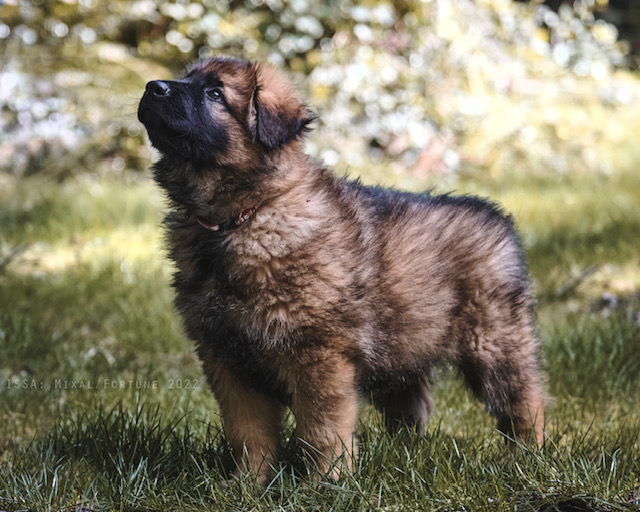
Ribcage and proportions: All pups had decent oval rib cages. A little more would have been nice but they were not slab-sided. All pups were slightly long in proportions, likely a compromise between the dam, who is long-bodied, and the Turvuren who is shorter-bodied (so all pups ended up between the two). These pups will thus carry both genes—for shorter body proportions and longer—and it should be expected that the second generation will be proportioned depending on the dog the F1 was bred to. Croup and thigh: All croups were long. One was gently sloping and the others were slightly steep. Thighs were good thickness across the board. Rear angulation/stifle: As with proportions, we saw a compromise between Mixal, who has good rear angulation/stifle, and Fortune, who lacks it. All pups had decent, balanced rears. Would recommend breeding this F1 generation to dogs with good stifles to pull forth the Mixal genetics for better movement going forward. Rear stance: Three pups had good rear stances (while standing on the ground--it was hard to replicate this on the table, because they wanted to crouch). One pup did have slight cow hocks—not bad, but they were there. Tail set, length, tip, shape: Tails had some curve but did not hook. All pups had slightly high tail sets like their dam. All had solid black tips with no white hairs. Tail length really varied, with one pup slightly short, one slightly long, and two a good length per the breed standard (one bone past the hock joint). Bone and substance: Two pups had medium bone at best with two others having medium to heavy. Bone can be unpredictable as pups grow, so final judgement should be made at adulthood. Body width seemed decent to good. Movement: All pups were balanced movers. They did not have great reach or drive (to be expected given that we will need to work on front and rear angulation), but trotted well and had good physical coordination. They displayed good single-tracking front and rear. 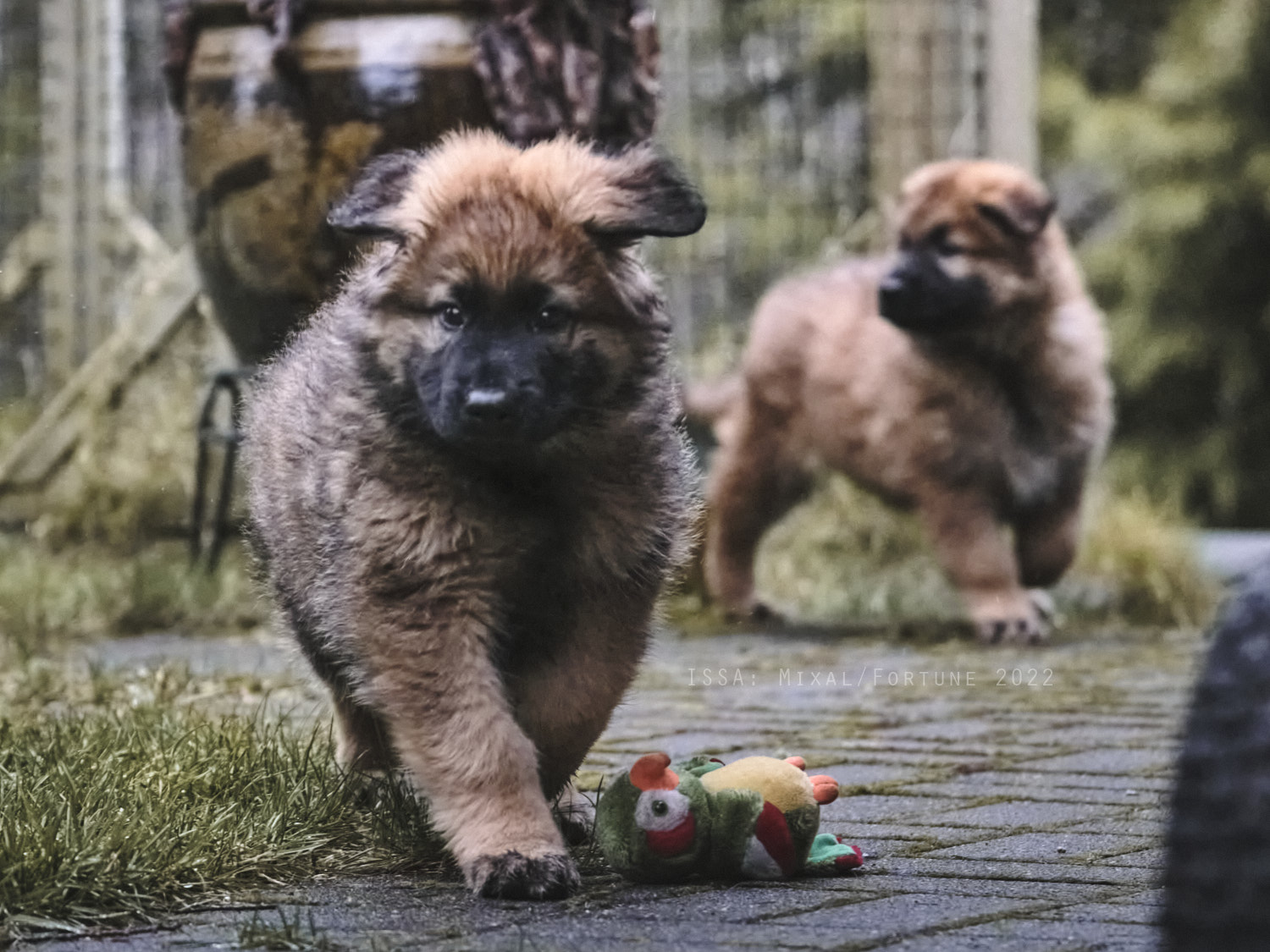
FINAL THOUGHTSWHAT WE GAINEDWe did gain three out of four pups without cow hocks, three out of four who were not east-west, good heads, smaller ears, and decent to excellent lower jaws in this litter. The chest width was also very good across the board. I appreciated the tails not being too long in most pups. Even though these pups are slightly long as compared to 9:10 proportions, they do carry the genetics for Fortune’s shorter body length, enabling us to spread more of that through our gene pool. Temperament-wise, our biggest gain in my opinion was the people-pleasing drive. There were no hard-headed pups, even if they were laser-focused on the breeder. Hopefully this can help to counter some of the more stubborn or hard-headed temperaments we have seen in the breed. THINGS TO WATCHWe still need to work on angulation, front and rear. If these dogs are bred to mates who are upright in the shoulder or short on stifle, we’ll lose the benefit of breeding to Mixal’s correct angulation. Also these dogs should not be matched to mates who are definitely long-bodied, which would bring forth Mixal’s longer proportions and lose the benefit of Fortune’s shorter body length genetics. These pups were single-minded and focused on the breeder/owner, with most not caring two bits about a stranger! If more friendliness to strangers is desired, these pups should be bred to more outgoing dogs. CONCLUSIONOverall I feel like this could be a very successful outcross! I was really pleased to see the moderation Mixal brought to the Terv’s physical extremes. With the exception of the owner-focused drive and the red color, all of these pups looked and acted like Shilohs. I look forward to seeing how wide the pups’ builds are at adulthood, what sort of size we get and how the bone will be, and how the health testing turns out! Great job Kristina, Mixal, and Fortune! 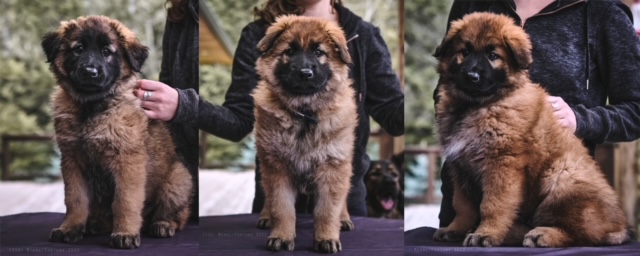 
|